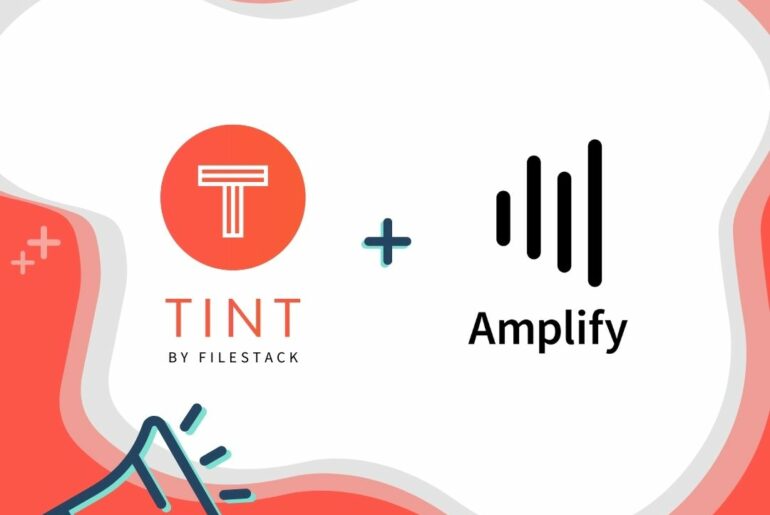The User Generated Content (UGC) aspect of influencer marketing is an increasingly important core component to effective digital strategies. Artificial Intelligence has touched virtually every area of business and AI applied “intelligently” has the power to maximize the effect of UGC influencer marketing. Through powerful algorithms, marketers can quickly locate quality visual content from a massive variety of creators and then distribute it when and where it will make the most impact, with incredible accuracy and speed.
Brands support the fans they’ve already won over by sharing, and repurposing their brand-centric content, while also using this social proof to advertise to other potential customers.
This article will talk about the importance of understanding and investing in User-Generated Content (UGC) as a way to engage organically with your brand, build brand recognition and receive the best ROI. We’ll also discuss how AI can help brands identify and amplify UGC for marketing campaigns.
The importance of user-generated content
UGC is a vote of confidence from your audience. It’s a powerful form of social proof and the next evolution of word-of-mouth. This is especially true in a modern era, during which more people are gaining a voice through social media platforms like Instagram.
Truly understanding how to leverage UGC can improve your marketing, while also strengthening your bond with consumers who already express satisfaction with your brand. UGC can also offer insights as a form of market and messaging research.
Unsurprisingly, consumers are tired of being constantly sold to, and respond better to reviews and other customer’s opinions from UGC-centric influencer marketing campaigns. One recent study shows that nearly half of millennials alike trust user testimonials over online advertisements.
Trust and credibility are key and long gone are the days of easy influence through a well-placed and thought out advertisement. Modern consumers demand social proof in the forms of visual content, reviews, testimonials and open discussions about your brand, but the key is your brand should have a hand in this. Consider this: ads that contain some form of UGC have a click through rate 4 times higher than branded content.
Brands that ignore UGC generally end up being plagued by negative or uninformed commentary about their product or service, which they then must remedy at a high cost. Embracing UGC from the beginning enables brands to have a say in the conversation, if not control it entirely.
With UCG, the feeling is that you are marketing with your customer demographic, not at them. By doing so, you are strengthening your connection with your customers and allowing them to play a role in determining your brand’s creative expression.
AI and UGC influencer marketing
The use of AI can optimize not just for time, but also expand and increase the positive effects of UGC content. AI gives brands the means to obtain and display more and higher-converting UGC at scale throughout the buyer journey. Personalization, engagement metrics, and machine learning have shaped the ways in which companies and consumers interact with content, and will continue to do so in the future.
The right AI can help guide and automate choices, taking the guesswork out of marketing. This can be applied to UGC, just as it is in other areas of business.
Most marketing teams today are relying heavily on AI-based remote collaboration tools that come with essential features such as the ability to share files and images, assign deadlines and easily communicate with remote teams online. AI can help guide decisions and cut down on the back-and-forth, especially when it comes to sorting and categorizing high volumes of content, targeting specific audiences with hyper-personalized content, and capturing the essence of visual content.
Ways that brands apply AI for UGC
There are several ways that top brands use the advanced AI found in the TINT platform to improve their UGC efforts. One commonly seen approach is to use machine learning to analyze thousands or even millions of posts to provide a relevance and quality score. It can also help determine which quality content plays a key role in the decision-making process of whether to buy or not.
Another area this can be applied is in sourcing and sorting common questions through social listening. Once these questions have been gathered, brands can either work towards creating FAQS or otherwise incorporating answers to these commonly asked questions in their very first interactions with potential customers.
Amazon is a great example of this. They utilize AI to target customers who have already purchased a product, and send these customers emails to ask them if they can help answer a question another potential customer has asked. In a way, the Amazon approach takes UGC one step further by directly connecting a potential buyer with a past buyer, and letting the conversation organically flow from there.
This type of data can also be helpful to determine new uses or demand within unexpected customer demographics. This can help maximize marketing tactics. While it’s easy for a marketing team to get together and come up with a list of the most common questions and issues requiring troubleshooting for a product, it misses out on these aspects that can only come from your customers.
For example, the Magic Eraser by Mr. Clean was originally marketed for cleaning up marks on walls, such as the ones made by children with crayons. However, as years have gone by, more new uses for the product have cropped up. From using it to clean the vachetta leather off of Louis Vuitton handbags to keeping your designer sneakers a bright white, customers have enjoyed listing off the strangest usefulness they find in this common household product.
Wisely, the brand utilizes customer reviews (a form of UGC) on the website. This is a convenient and cost-effective strategy of reminding their visitors of all the different uses their product has.
Coronavirus and digitalization
The coronavirus pandemic has led people to buy more online, which in turn, raises the stakes for digital marketing. It has also uncovered undervalued opportunities in different demographics such as the baby boomer demographic as people who normally did not spend much time online are increasingly turning to their computer or smartphone.
Especially among seniors and those who were never comfortable completing tasks online, stay-at-home orders encouraged learning and adoption of new habits. This has resulted in a new wave of internet users who can be targeted through digital marketing and will likely engage with and trust the authenticity provided by UGC.
Other applications of AI are capable of utilizing a wide variety of behavioral data points from basic online activities, enabling brands with insights to create a more personalized experience based on the time users are online, what devices they use and what communication methods they prefer.
Email marketing is still an effective means of reaching out to customers, according to London-based online marketer Alex Williams of Hosting Data. You can use UGC to supercharge marketing emails by including customer testimonials, photos, reviews or questions as part of the overall message.
“Email marketing is incredibly cost-effective, with potentially massive returns on investment,” says Williams. “You have direct contact with your customers, with lots of flexibility in how you craft your message.”
Conclusion
UGC influencer marketing is an important pillar to your marketing strategy that will enhance your brand’s credibility and engagement among key demographics.
When the sincerity found in content created by real customers is married with the powerful scalability of machine learning to find, target and share the best UGC the results can be incredible.
Ready to learn more? Our experts are available for a no-obligation consultation to help you plan the best way to leverage the power of AI for UGC – request a demo.
Nahla Davies is a software developer and tech writer. Before devoting her work full time to technical writing, she managed—among other intriguing things—to serve as a lead programmer at an Inc. 5,000 experiential branding organization whose clients include Samsung, Time Warner, Netflix, and Sony.




